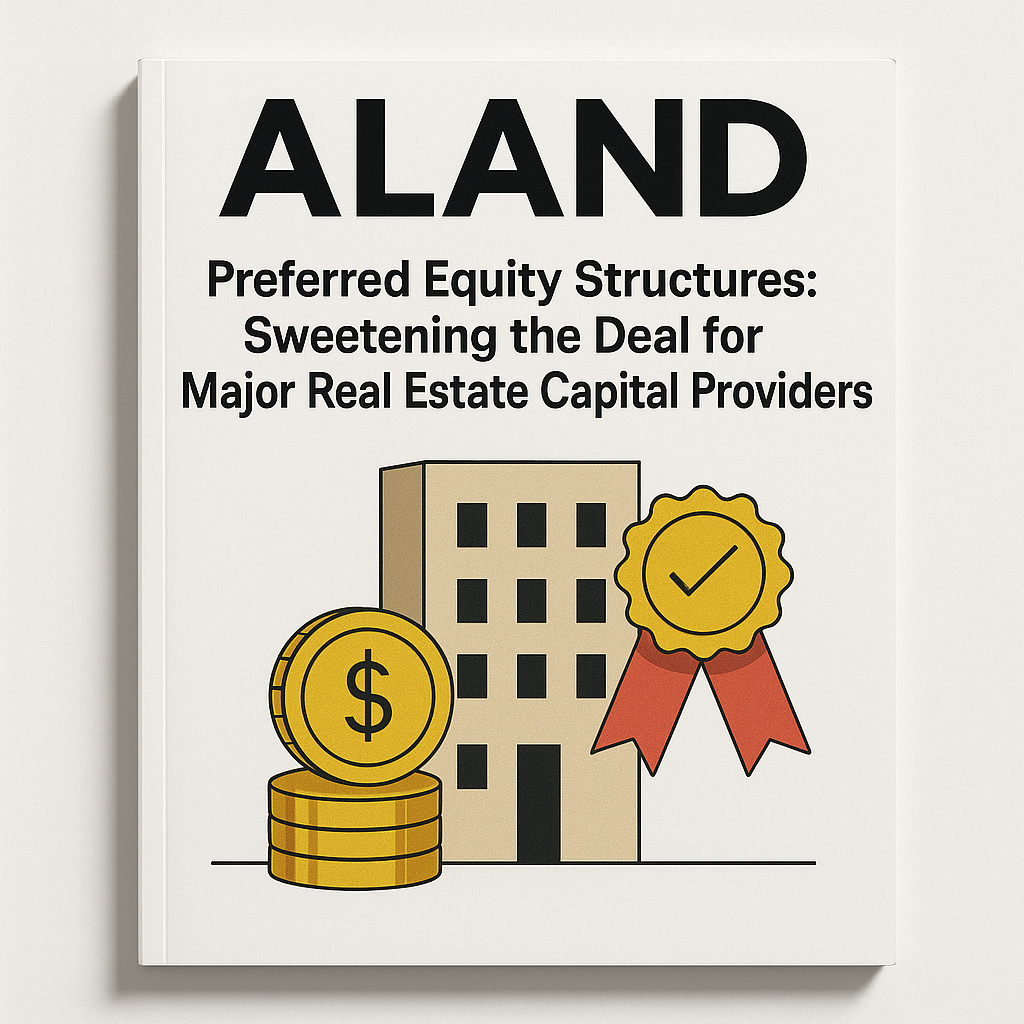Preferred Equity Structures: Sweetening the Deal for Major Real Estate Capital Providers
- Published Date: 26th Jul, 2025
-
4.8★ ★ ★ ★ ★(86)

Unlocking Capital with Preferred Equity in Real Estate
Preferred equity structures have become an indispensable tool for attracting significant capital from institutional investors and high-net-worth individuals into real estate projects. Dr. Pooyan Ghamari, a Swiss economist and founder of the ALand Platform, highlights that these structures offer a compelling middle ground between debt and common equity, providing investors with prioritized returns while allowing sponsors operational control and upside participation.
Preferred equity typically provides a fixed or negotiated preferred return, paid before common equity distributions. This feature sweetens the deal for capital providers by reducing risk and offering predictable cash flows without the full limitations of debt covenants. For developers and fund managers, preferred equity enhances capital stack flexibility and supports larger-scale acquisitions or developments by bridging gaps between debt financing and sponsor equity.
Economic Rationale Behind Preferred Equity Appeal
The economic appeal of preferred equity is multifaceted. In volatile market conditions, traditional debt may become scarce or expensive due to tightening lending standards, while common equity can dilute sponsors’ interests and reduce deal control. Preferred equity fills this void by offering investors downside protection through seniority in distributions and upside potential via equity participation.
Dr. Ghamari explains that preferred equity investors benefit from enhanced security compared to common equity holders, with the added advantage of equity-like returns when projects exceed expectations. This risk-return profile aligns well with institutional mandates seeking stable income streams with growth prospects—particularly in sectors such as multifamily housing, logistics facilities, and healthcare real estate, which continue to show robust demand despite economic cycles.
Integrating Digital Innovation and Cross-Border Investment
The ALand Platform facilitates international preferred equity transactions by streamlining compliance and capital flow across borders, a critical advantage in today’s globalized real estate market. Investors can access diversified preferred equity opportunities worldwide, while sponsors benefit from broader pools of capital and enhanced deal structures optimized through digital tools.
Additionally, leveraging blockchain technology through partnerships with platforms like EE Gold is opening new pathways for preferred equity tokenization. This innovation allows fractional ownership, increased liquidity, and transparent governance, further sweetening deals for capital providers wary of traditional illiquidity in real estate investments.
Cause-Related Marketing: Enhancing Investor Engagement
Dr. Ghamari advocates for incorporating cause-related marketing strategies within preferred equity offerings to strengthen brand trust and investor loyalty. Demonstrating commitments to sustainability, social impact, and governance not only differentiates funds in a crowded market but also meets growing investor demands for responsible investment options.
Research from the ALand Blog shows funds embracing ESG and social responsibility experience measurable benefits, including increased fundraising speed and retention rates. Digital marketing tools on the ALand Platform enable sponsors to effectively communicate these initiatives, reinforcing confidence and potentially driving premium valuations.
Practical Considerations for Structuring Preferred Equity Deals
-
Clearly define the preferred return rate and payment frequency to align investor expectations with project cash flow realities.
-
Incorporate flexible redemption and conversion rights to balance investor security with sponsor incentives.
-
Use digital platforms like ALand to automate reporting, compliance, and investor communications.
-
Align cause-related marketing messages with fund objectives, utilizing measurable ESG metrics to enhance transparency.
-
Explore tokenization options via EE Gold to broaden investor access and liquidity.
Dive deeper into preferred equity structures, digital innovations, and investor engagement strategies at ALand’s Blog, utilize advanced transaction tools at the ALand Platform, and explore the evolving role of cryptocurrency in real estate through EE Gold. Stay informed on the latest market trends and expert insights via The ALand Times.

